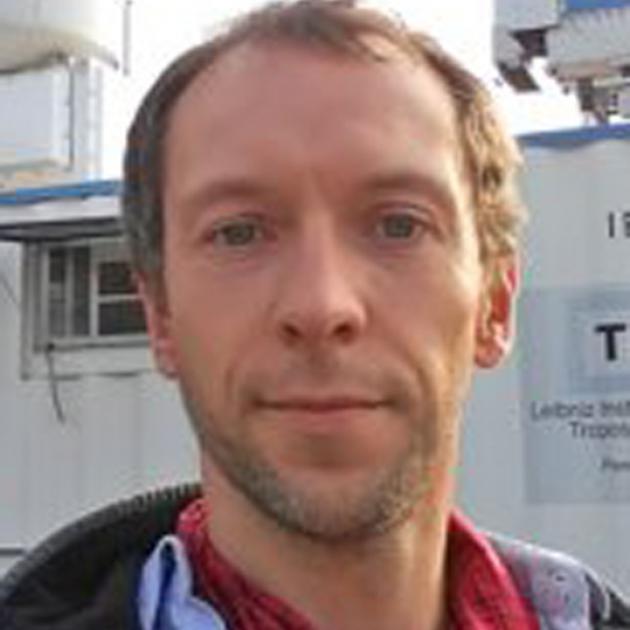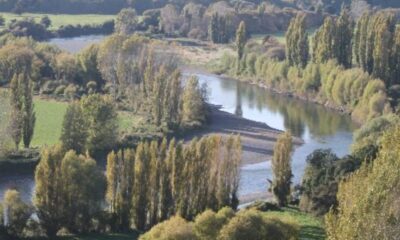Science
Researchers Launch Laser Study on Aerosols Near Invercargill

A new atmospheric research project utilizing a laser beam is underway at the MetService site near Invercargill Airport, New Zealand. The goSouth-2 initiative aims to gather critical data regarding how aerosols influence the atmosphere. This project represents a collaboration between institutions in Germany and New Zealand, including the Meteorological Institute of the University of Leipzig and the Leibniz Institute for Tropospheric Research (TROPOS), alongside New Zealand partners such as MetService, the University of Canterbury, and The Air Quality Collective.
As part of the preparations, five researchers from TROPOS are setting up their equipment ahead of the project’s official launch on September 3, 2023. According to TROPOS researcher Patric Seifert, aerosols—tiny airborne particles—enter the atmosphere from various sources, both terrestrial and marine. These particles include salt, dust, pollen, and emissions from smoke or volcanic activity. They play a vital role in cloud formation by serving as nuclei for cloud droplets.
“The less aerosol particles are available, the less cloud particles can form, and vice-versa,” Dr. Seifert explained. The southern tip of New Zealand, located at the northern edge of the Southern Ocean, offers a unique environment for studying the interactions between aerosols and clouds. The region can exhibit very clean atmospheric conditions when air masses sweep in from the Antarctic, contrasting sharply with the more polluted air from continental masses arriving from Australia.
By examining the differences in aerosol content across these varying air masses, researchers aim to enhance understanding of how clouds react to changes in aerosol levels. Dr. Seifert noted that atmospheric and climate models still exhibit less accuracy in simulating cloud behavior over the Southern Ocean compared to the northern hemisphere. This discrepancy may be linked to the differing aerosol levels present in each hemisphere, as more data is typically available regarding the heavily polluted northern atmosphere.
Invercargill was selected as a research site due to its logistical advantages, which facilitate the operation of equipment and accommodation for staff. The MetService already conducts significant observations at the location, including long-term weather balloon soundings, precipitation measurements, and assessments of solar and thermal radiation.
While all instruments for this research are land-based, residents may notice a green laser beam in the sky near Invercargill Airport. “Our lidar [light detection and ranging] systems emit laser pulses to investigate the aerosols,” Dr. Seifert remarked. The fixed beam has been communicated to airport staff to ensure safety. In addition to lidar, researchers will employ radar systems to monitor and analyze clouds and precipitation.
The TROPOS team will remain on site for a duration of 18 months, while a group of approximately 15 researchers based in Germany will analyze the data collected. This current project follows the goSouth-1 study, a month-long research effort completed in 2022 at Pahia, located about 50 kilometers from Invercargill.
The outcomes of the goSouth-2 project are anticipated to significantly contribute to the understanding of aerosol-cloud interactions, with broader implications for climate modeling and atmospheric science.
-

 World3 months ago
World3 months agoTest Your Knowledge: Take the Herald’s Afternoon Quiz Today
-

 Sports3 months ago
Sports3 months agoPM Faces Backlash from Fans During Netball Trophy Ceremony
-

 Lifestyle3 months ago
Lifestyle3 months agoDunedin Designers Win Top Award at Hokonui Fashion Event
-

 Sports3 months ago
Sports3 months agoLiam Lawson Launches New Era for Racing Bulls with Strong Start
-

 Lifestyle3 months ago
Lifestyle3 months agoDisney Fan Reveals Dress Code Tips for Park Visitors
-

 World3 months ago
World3 months agoCoalition Forms to Preserve Māori Wards in Hawke’s Bay
-

 Health3 months ago
Health3 months agoWalking Faster Offers Major Health Benefits for Older Adults
-

 Politics3 months ago
Politics3 months agoScots Rally with Humor and Music to Protest Trump’s Visit
-

 Top Stories3 months ago
Top Stories3 months agoUK and India Finalize Trade Deal to Boost Economic Ties
-

 World3 months ago
World3 months agoHuntly Begins Water Pipe Flushing to Resolve Brown Water Issue
-

 Entertainment3 months ago
Entertainment3 months agoExperience the Excitement of ‘Chief of War’ in Oʻahu
-

 Science3 months ago
Science3 months agoNew Interactive Map Reveals Wairarapa Valley’s Geological Secrets









